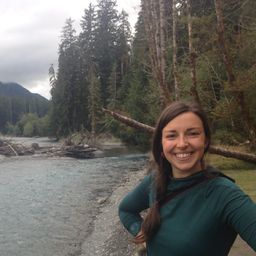General Session (Dendroecology, PT2) (rescheduled)
My Session Status
Session reescheduled from June 28th to June 29th
Sub Sessions
Fire regimes shaped forest ecosystems for centuries in the southwestern United States prior to a century of fire exclusion. Tree-ring fire history studies have been vital to our ecological understanding of fire regimes and to inform management. Regional-scale synthesis efforts have revealed the strong connection between fire and climate, but by focusing on coarse-scale patterns over time, such studies may have overlooked finer-scale interactions of fire, climate, vegetation, and human acti...
We examined the effects of large-scale modes of climate variability on regional fire history of red pine forests of eastern North America using (a) a network of sites with fire scar-based reconstructions of fire histories over 1675-1900 AD, (b) reconstructions of circulation indices (1675-2019), and (c) the 20th century observational records of weather (1950-2019) and fire (1959-2019). In exploring climate-fire relationships over the distribution range of red pine, we hypothesized that the...
Indigenous land stewardship and mixed-severity fire regimes both encourage landscape heterogeneity and the relationship between them is an emerging area of research. To contribute to this exploration, we reconstructed the historical fire regime of Ne Sextsine, a 6000-ha dry, Douglas-fir-dominated forest in the traditional territory of the T’exelc (Williams Lake First Nation) in British Columbia. Between 1550 and 1982 CE, we found median fire intervals of 15 years at the plot-level and 4 ye...
There is a growing need for improved methods and approaches for managing wildfires in British Columbia, as uncharacteristically large wildfires exceed government capacities for control and suppression. The 2018 Tweedsmuir complex fire exceeded half a million hectares, negatively impacting several endangered species and the ecosystems they depend on. Tweedsmuir Provincial Park is one of BC’s largest protected areas and plays a critical role in connecting diverse landscapes and allowing plan...
Cyclic outbreaks of the larch budmoth (Zeiraphera griseana, hereafter referred to as LBM) have affected the growth of their larch host trees (Larix decidua) in the European Alps. These regular defoliation events have weakened since the 1980s, likely in response to climate change, but recured in 2018. Here, we investigate the LBM activity along two elevational gradients in the Swiss Alps using tree-ring width (TRW) and maximum latewood density (MXD) measurements from 15 sites between 1,400 ...
The most frequent fire regimes in the world exist in environments that balance maximum fuel production and maximum fire occurrence potential. Often these environments exist at low elevations, correspond to subtropical climates, and have long growing seasons that push the limits of reliable annual ring formation. Historical fire regimes in ecosystems with these conditions are poorly studied. We investigated fire scarring in such conditions in southwestern Georgia, USA and successfully const...
Insect and pathogen outbreaks, fires, hurricanes, severe drought and other disturbances alter the structure, composition and function of forests. Results from silvicultural experiments suggest disturbances in lower density forests lead to better mitigation of drought stress for surviving trees than those in higher density stands. As drought and insect and pathogen outbreaks are expected to become more severe and frequent, understanding how surviving trees’ climatic response is affected by ...
The global rise in temperature and associated changes in climate have led to decline of forests around the globe. A particularly severe example of this is yellow-cedar (Callitropsis nootkatensis) decline along the coast of British Columbia and Alaska, where anthropogenic climate change has led to reduced insulating snowpack, leaving yellow-cedar roots vulnerable to thaw-freeze events, resulting in freezing damage to roots and water stress during the subsequent growing season. Yellow-cedar ...








Discussion